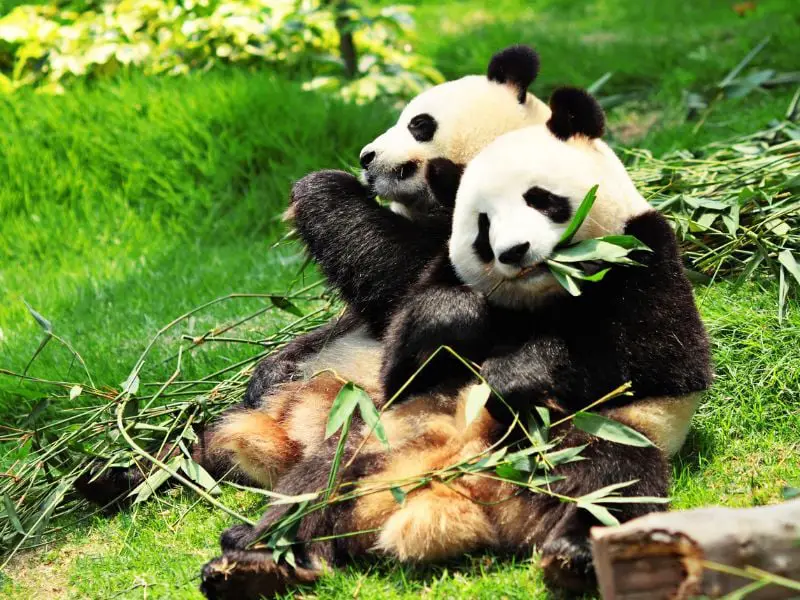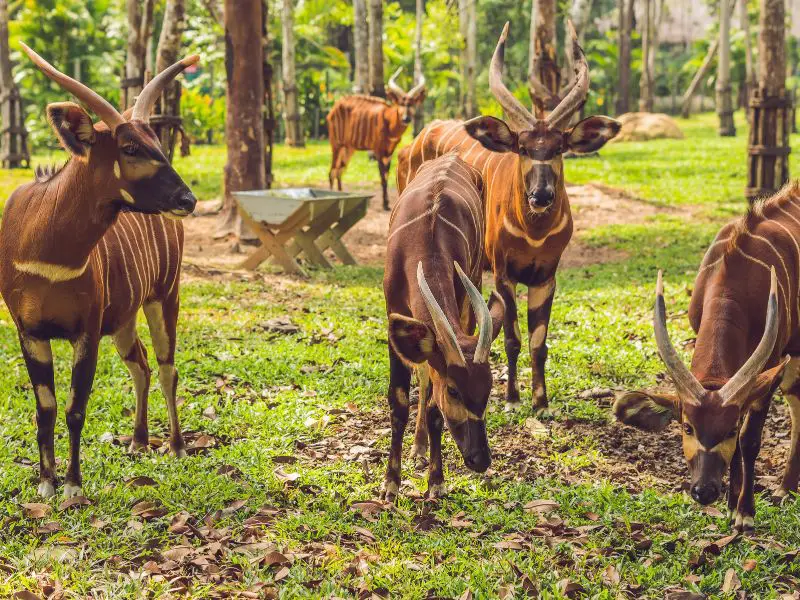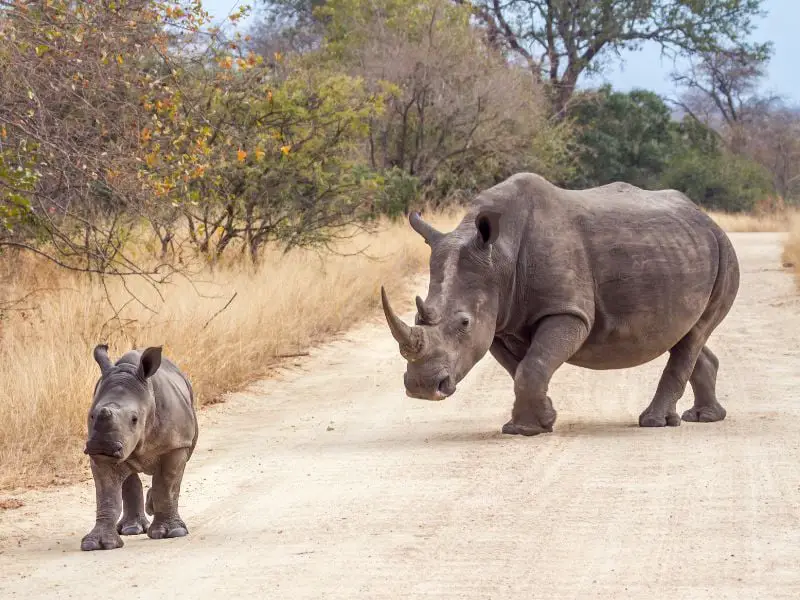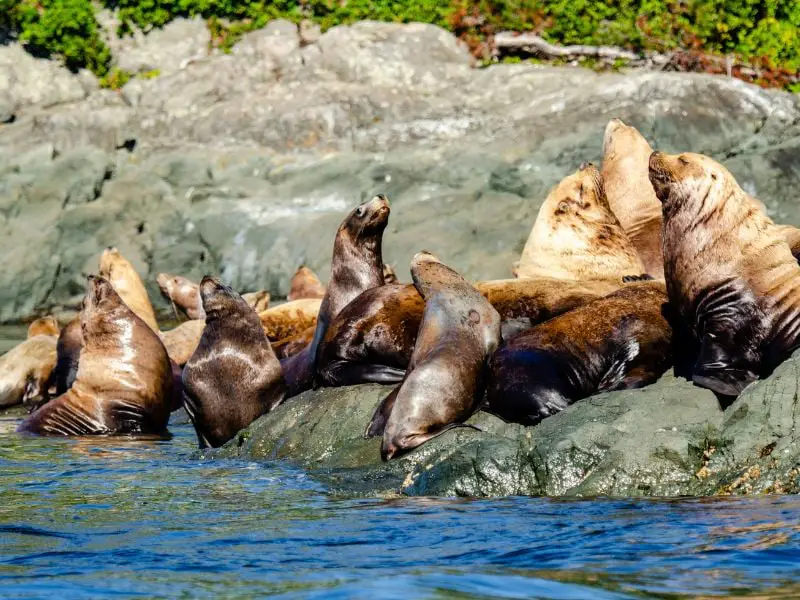Have you ever wondered if it’s possible for a species to come back from the brink of extinction? Surprisingly, there are several fascinating examples of animals that have defied the odds and made a remarkable comeback.
Extinction is a tragic event that has plagued our planet for millions of years. However, in recent times, there have been some incredible stories of animals that were once thought to be extinct, only to be rediscovered or reintroduced to their natural habitats.
The resilience of these species is a testament to the power of conservation efforts and the importance of protecting our planet’s biodiversity. In this article, we will explore the animals that came back from extinction, showing nature’s remarkable resilience and adaptability.
Why Species Come Back from Extinction
There are several reasons why a species may come back from extinction, including:
- Conservation efforts: Conservationists can take steps to protect endangered species, such as creating protected habitats, breeding programs, and reintroduction programs. These efforts can help boost the population of a species and bring it back to the brink of extinction.
- Evolutionary adaptation: In some cases, a species may evolve to adapt to changing environmental conditions or new predators. This can allow the species to survive and thrive where it previously could not.
- Natural rebound: Occasionally, a species may rebound on its own after a population decline due to reduced predation, better food availability, or favorable climate conditions.
- Genetic rescue: When a population becomes very small, it can suffer from hereditary problems such as inbreeding and reduced genetic diversity. Genetic recovery involves introducing new individuals from genetically diverse and compatible species to help restore genetic diversity and improve population’s health.
- Technological advancements: Technological advances, such as cloning and genetic engineering, may allow scientists to bring back extinct species by recreating their genetic material and reintroducing them into the wild. However, these methods are still largely experimental and controversial, and the long-term implications still need to be fully understood.
Not all species can come back from extinction, even those that do may face ongoing threats from habitat loss, climate change, and other human activities. Conservation efforts are critical for protecting endangered species and ensuring their long-term survival.
Animals That Came Back From Extinction
1. Giant Panda
The giant panda, one of the most recognizable animals globally, suffered extensive habitat loss and poaching in the 20th century, leading to a sharp decline in their population in the 1970s. A diet consisting of 99% bamboo makes them susceptible to starvation, and their infrequent reproduction makes it difficult to recover naturally.
Over the past five decades, the Chinese government initiated one of the most intense conservation projects to protect the species. Through establishing strict laws and numerous reserves, the panda population has risen to approximately 3,000, no longer considered endangered by the IUCN but still a vulnerable species.

2. California Condor
The California condor is the biggest vulture and land bird in North America, and they used to roam around the southwestern US and northwestern Mexico. But, their population decreased dramatically during the 20th century because of pesticides such as DDT, poaching, and habitat loss.
By 1987, they were declared extinct in the wild, with only 27 condors remaining in captivity. The US government launched a breeding program in a few zoos to save these fantastic creatures. The project became one of the most expensive conservation efforts in US history, with a total cost of over $35 million and an annual upkeep of $2 million. But it paid off as of 2019, with the California condor population increasing to 518 individual condors.
Many of these birds have been reintroduced to the wild, though they are closely watched and tagged. Despite this success, the IUCN still lists them as a Critically Endangered species due to their low numbers and potential future threats.

3. Corroboree Frog
The Corroboree Frog is a little black and yellow critter, and they only live in a tiny sub-alpine part of Australia. Unfortunately, they’ve been almost wiped out because of this nasty fungus disease that’s been going around.
But here’s the good news! Over the last few years, institutions like Taronga Zoo in Sydney have been breeding a population of Corroboree Frogs behind the scenes. Now, they’re returning these frogs to the wild, but in these specially designed habitats that are free of the nasty disease. This is important because, in recent decades, six frog species in Australia have gone extinct. But, thanks to these institutions, the Corroboree Frog won’t be one of them.

4. Bongo
Meet the Eastern Bongo, a large antelope that lives in a super dense and hard-to-get-to region of Kenya. These creatures are elusive and were among the last large mammals to be discovered. Unfortunately, things aren’t looking great for Eastern Bongo. Poaching and habitat loss have caused their wild population to drop shockingly low numbers.
There might even be more Eastern Bongos in captivity than in the wild. But don’t worry! Zoos worldwide are teaming up on a Bongo breeding program to keep a healthy population going. This will create a safety net for the survival of this species, and we can all help ensure that happens.

5. Bellinger River Turtle
The Bellinger River Snapping Turtle is a fascinating species native to the waters of the Bellinger River in Australia. However, in 2015, a catastrophic event shook the population to its core when a newly discovered disease ravaged 90% of the species.
Thankfully, an emergency response team of conservationists sprang into action and successfully rescued 16 healthy turtles. These heroic conservationists then began a breeding program to safeguard the future of the Bellinger River Turtle population. Fast forward to 2017, and the first batch of hatchlings emerged, offering a glimmer of hope for the survival of this unique species.

6. Southern White Rhinoceros
The southern white rhinoceros is one of two subspecies of white rhino, and while it’s more common than its northern cousin, it almost went extinct in the early 20th century. Poaching and habitat loss were the culprits that decimated the population. Scientists even believed they had gone extinct until a tiny population of only 20 individuals was discovered in 1895 living on a single nature reserve in South Africa.
Over the past century, conservationists have poured their hearts and souls into reviving the southern white rhino population. Today, there are nearly 19,000-21,000 of these magnificent creatures worldwide, with many residing in South Africa. Their incredible comeback story is one of the best examples of animals that have bounced back from the brink of extinction. While some now live in the wild, most are kept in zoos and on private game reserves.
Despite their impressive recovery, the southern white rhinoceros is still listed as a Near Threatened species due to the ongoing threats of poaching and habitat loss.

7. Peregrine Falcon
The peregrine falcon, aka the duck hawk, is a magnificent animal that holds the title of the world’s fastest creature. They can dive during a hunting stoop at paces of up to 242 miles per hour and are highly adaptable to different environments. Sadly, pesticides such as DDT in the mid-20th century caused a significant decline in the falcon population, leading to their endangerment.
Researchers discovered that the pesticides were thinning the calcium in the falcons’ eggs, causing a reduction in hatchings. As a result, several countries banned harmful pesticides and established breeding programs to increase the population of falcons. These conservation efforts have been successful, with the global population of peregrine falcons estimated to be around 140,000. This achievement has earned them a spot on the IUCN’s list of species of Least Concern, highlighting the effectiveness of conservation initiatives and the resilience of wildlife.

8. Stellar Sea Lion
The Stellar sea lion, the family’s largest member, once lived abundantly throughout the northern Pacific. However, their western population near Alaska and the Aleutian Islands saw a dramatic decline of 70%-80% by the 1990s, reaching a low of 18,000. The reasons for this decline have yet to be fully understood but may include overfishing, predation, and climate change.
As a result of this population decline, Steller sea lions were added to the endangered species list under the United States Endangered Species Act in 1997. Although the western population has yet to recover fully, current estimates suggest that it has around 46,000 members, and the eastern population is thriving.
Despite these positive developments, the IUCN still lists Steller sea lions as a Near Threatened species because of the uncertain status of their recovery. As efforts to protect and conserve these magnificent creatures continue, it is hoped that their population will eventually rebound to their former abundance throughout the northern Pacific.

Read More: Extinct Animals in 2023 and the Urgency to Preserve Wildlife
Author’s Note
The stories of animals that have come back from the brink of extinction remind us of the resilience of wildlife and the power of conservation efforts. Despite facing seemingly insurmountable obstacles, humans have made significant strides in the survival and recovery of many iconic species, including the southern white rhinoceros, the peregrine falcon, and the California condor.
However, while we have made significant progress, the work must go on. Continued efforts are needed to protect and conserve these species and their habitats and to address the underlying issues that threaten their survival, such as habitat loss, climate change, and poaching. By working together, we can ensure a brighter future for all of us and the unique and awe-inspiring creatures that call our planet home. We can build a world where both humans and wildlife can thrive with dedication, innovation, and collaboration.


1 thought on “The Lazarus Effect: 9 Animals That Came Back from Extinction”